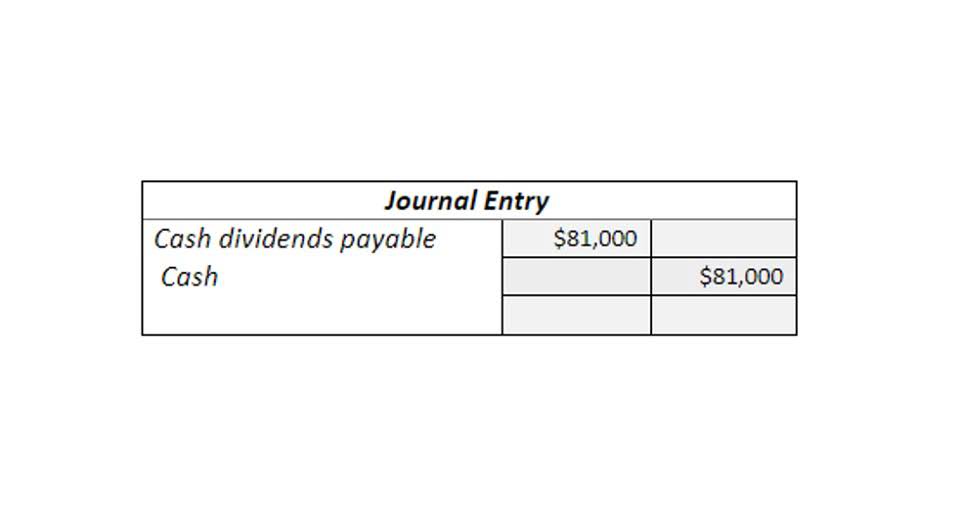
At the beginning of new accounting period, accountant reverses all adjusting entries which record at the end of previous period. And subsequently, they just record transactions normally, it prevents any confusion regarding double booking. Reversing entries are the entries post at the beginning of the accounting period which aims to eliminate the accrue adjusting entries which we made at the end of prior accounting period.

Accrued expense example
- The data entry personnel won’t need to worry for the impact made by the adjusting entry on December 31, 2022.
- If Paul does not reverse last year’s accrual, he must keep track of the adjusting journal entry when it comes time to make his payments.
- When a portion of a prepaid expense, such as insurance, is allocated to the current period, reversing entries simplify tracking by clearing adjustments.
- If these systems aren’t configured to reverse prior adjustments, they can conflict with manually posted transactions and inflate financial data.
- Automatic reversing entry rely on accounting software to reverse journal entries without manual intervention.
- They ensure the new fiscal year starts with accurate opening balances and a clean slate.
It will classify to asset or expense when we receive goods or consume the service. Implementing reversing entries effectively requires a clear understanding of best practices. When done right, reversing entries can save time, reduce errors, reversing entries are optional and improve overall bookkeeping efficiency.

The Accounting Cycle Example
This reversing entry should decrease the prepaid insurance account by $30,000, resulting to a zero balance again, effectively reversing the adjusting entry. At the same time, the insurance expense account would be debited for $30,000 which corresponds to the unexpired portion. Reversing entries are journal entries that are recorded at the beginning of a new accounting period to reverse certain adjusting entries that were posted at the end of the previous accounting period. Reversing entries are usually made to simplify bookkeeping in the new year. For example, if an accrued expense was recorded in the previous year, the bookkeeper or accountant can reverse this entry and account for the expense in the new year when it is paid. The reversing entry erases the prior year’s accrual and the bookkeeper doesn’t have to worry about it.

What is an example of a reversing entry?
- This adjustment can be tracked using the expense method, simplifying expense reporting.
- Using reversing entries creates a clear audit trail, showing how corrections were made without deleting inaccurate entries.
- Reversing entries in accounting provides numerous advantages that help businesses maintain accurate and efficient financial records.
- This process aligns well with the income method of recognizing revenue, ensuring accurate records.
- Reversing entries in accounting simplify complex transactions, ensuring clarity and accuracy in financial records.
- If the reversing entry was not made at the beginning of 2024, then you still need to make sure to prepare an adjusting entry to recognize insurance expense for the expired portion on June 30, 2024.
- When teams rely on manual journals, there’s often a delay between adjusting and actual entries.
After posting the entry, your rent income account should now show a credit balance of $2,000 which is the net effect of debiting it for $1,000 and then crediting it for $3,000. You have recognized a total of $3,000 for this transaction, with $1,000 recorded on 2022 while the remaining $2,000 being recorded in 2023 upon collection. You now create the following reversing entry at the beginning of the February accounting period. This leaves the original $18,000 expense in the income statement in January, but now creates a negative $18,000 expense in the income statement in February. Bookkeepers make them to simplify the records in bookkeeping the new accounting period, especially if they use a “cash basis” system. If the accountant did not make a reversing entry at the beginning of the year, the accountant will have this entry upon collection of the income.

Accounting Principles and Concepts
By reversing entries in these scenarios, businesses can maintain accurate and reliable financial records. Whether addressing payroll, correcting errors, or refining forecasts, reversing journal entries ensures clarity and consistency, making them essential tools in accounting. By knowing the distinctions between manual and automatic reversing entry methods, businesses can choose the approach that aligns best with their needs. Whether using software or manual processes, reversing entry in accounting https://www.bookstime.com/ ensures financial records remain accurate and reliable, preventing common pitfalls in transaction adjustments.
Discover Best Software for Business
- This adjusting entry assures that the retailer’s income statement for the period ended December 31 will report the $18,000 expense and its balance sheet as of December 31 will report the $18,000 liability.
- We also have an accompanying spreadsheet which shows you an example of each step.
- The need to prepare reversing entries for prepaid expenses depend on which method you use in recording prepayments.
- Therefore, all the adjusting entries must be reviewed by the management teams such as accounting manager or finance manager.
To illustrate reversing entries, let’s assume that a retailer uses a temporary employment agency service to provide workers from December 15 to December 29. The temp agency will bill the retailer on January 6 and the retailer is required to pay the invoice by January 10. Assuming the retailer’s accounting year ends on December 31, the retailer will make an accrual adjusting entry on December 31 for the estimated amount.
